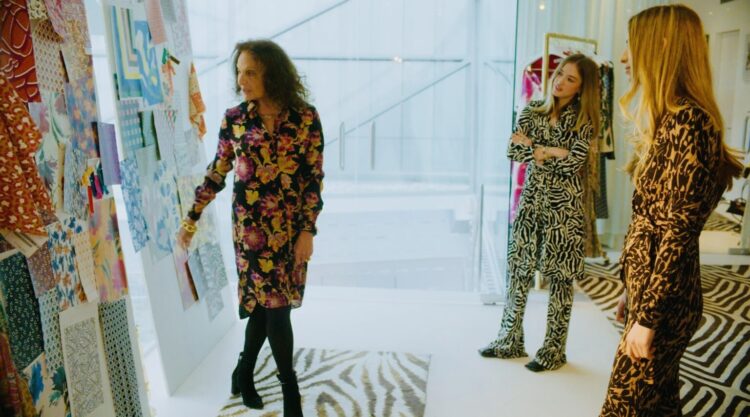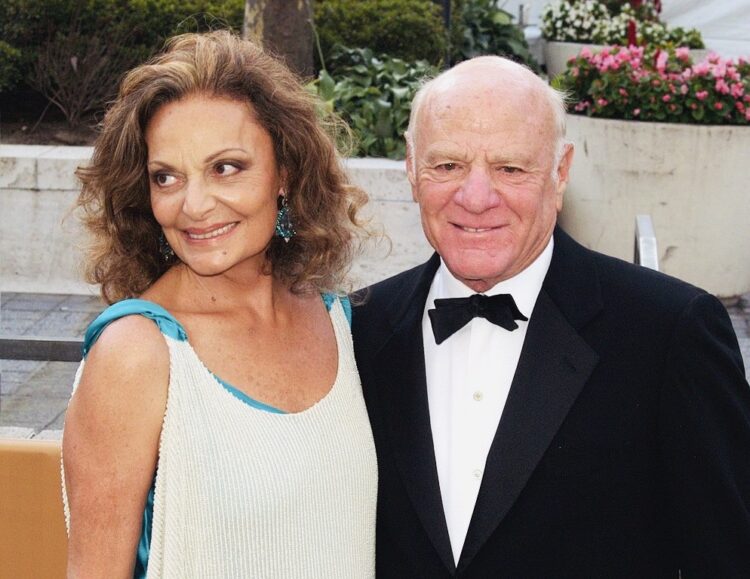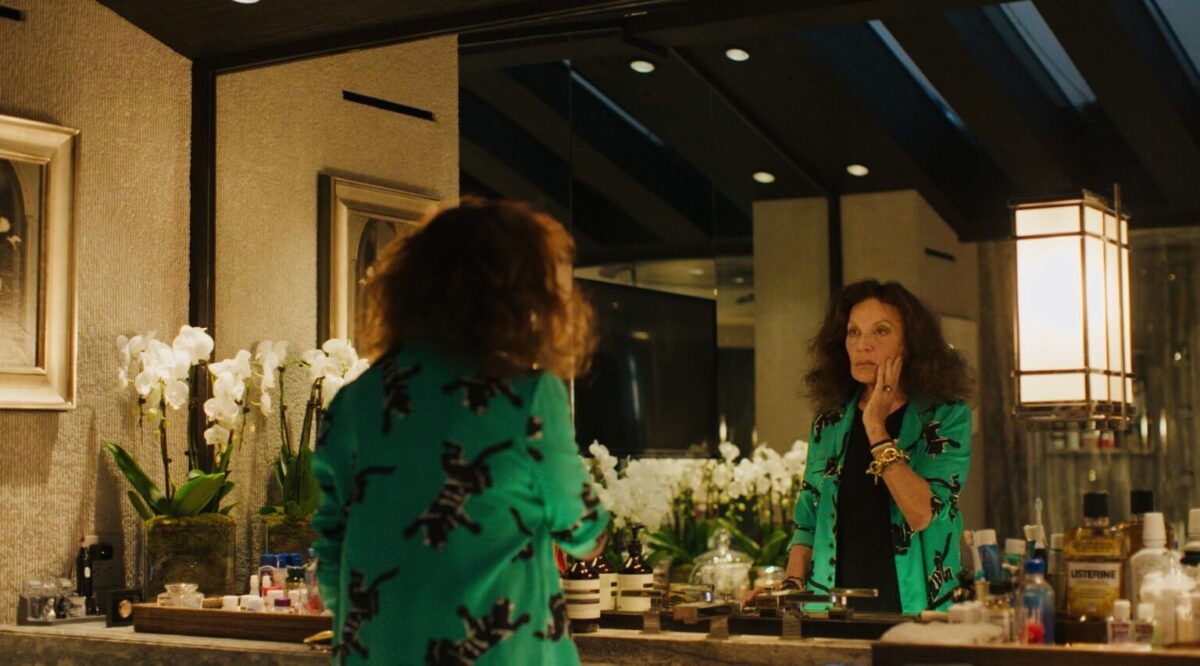Fashion designer/mogul Diane Von Furstenberg has been around the block more than once. “I’ve had a full life,” she says in a new documentary now streaming on the Hulu platform. “I’m 76. I should be 300.”
In Diane Von Furstenberg:Woman in Charge, Sharmeen Obaid-Chinoy and Trish Dalton present their subject as a clever, creative, driven and glamorous person whose achievements are second to none.
The daughter of Holocaust survivors, she acquired her aristocratic surname by marrying a German prince from Switzerland. Their tempestuous union was short-lived, but she kept his double-barrelled name and had two children with him, Alex and Tatiana, who appear in the film.
As she observes in the first few minutes of this straightforward movie, she was born only 18 months after her mother, Lilli Nahmias, a Sephardic Greek Jew from Thessaloniki, was transported to the Auschwitz-Birkenau extermination camp in Poland.
The Nahmias family settled in Belgium in 1930, and a decade later, Lilli met Simon Halfin, whom she married in 1945. Caught by the Nazis in 1944, they were sent to Auschwitz. Prior to being liberated, she survived a death march to the Ravensbrück concentration camp.
She lost so much weight that doctors advised her to forego motherhood. She ignored the advice, giving birth to Diane in 1946 and her brother, Philippe, in 1952.
“Just the fact that I was born was a victory,” she says. “My mother used to say, ‘God saved me so that I can give you life. By giving you life, you gave me my life back. You are my torch of freedom.’”
Lilli exerted an immense influence on Diane. “My mother was very tough when I was a little girl,” she recalls. “She wanted me to be independent, no matter what. She didn’t want me to be a victim, never wanted me to be afraid, and she always pushed me. I don’t think my mother ever said, ‘Be careful.’”
“I was never a child,” she adds, saying she was raised as a “grownup.”
Diane constantly mentions Lilli, but never her father, in this one hour and forty seven-minute film, which examines the trajectory of her personal and professional development. I’m speculating, but his banishment from the movie may be the result of Lilli’s divorce from Simon during Diane’s childhood.
At 18, after finishing boarding school in Switzerland, she met Egon Von Furstenberg, whose father was a German and whose mother was a member of Italy’s Agnelli family, the proprietors of the Fiat automobile company. By forging a relationship with him, Diane joined the moneyed European jet set.
When they temporarily parted ways, Diane began working for a photographer in Paris and, later, for an Italian fabric manufacturer. A few years later, they resumed their romance. They got married in 1969, when Diane was visibly pregnant.
“A Jewish girl marrying a German prince,” she says. “That was a big deal.”
Von Furstenberg’s antisemitic father was upset and boycotted his son’s wedding with a “dark” Jewish woman.
He and Diane moved to New York City, where he had a wide range of contacts. “He believed in me before anyone else,” she says.
Von Furstenberg introduced her to the influential editor of Vogue magazine, Diana Vreeland, and she played a role in advancing her budding career in the cutthroat fashion industry.

They were the “it” couple in their hedonistic, party-loving corner of New York City. Neither of them paid sufficient attention to their children before their marriage fell apart.
“He was difficult to be married to,” she admits.
One of their problems was that he was unfaithful. Being bisexual, he was intimate with a parade of men. His promiscuous lifestyle inevitably had fatal consequences. He contracted AIDS and succumbed to it.
Diane claims that their separation and divorce gave her the freedom to become the woman she aspired to be.
During the 1970s, she designed the fabulously successful “wrap” dress. Demand was such that factories churned out 25,000 dresses per week at one point. She went on to launch a fashion and fragrance empire. Strangely enough, the filmmakers hardly mention her foray into the perfume market.
At the age of 28, she appeared on the cover of Newsweek magazine. “She was one of the first influencers,” says fashion designer Marc Jacobs.
Being single, she had her pick of eligible bachelors. She dated A-list actors such as Ryan O’Neil and Richard Gere before finally settling on Barry Diller, the chairman of Paramount Pictures, whom she married in 2001. “She cracked me open from almost the first date,” he says.

A key moment in her consciousness as a Jew occurred when the Anti-Defamation League invited her to speak at one of its events. With her mother in mind, she disclosed she was the daughter of a Holocaust survivor.
“To hear myself saying that was so shocking to me,” she says. “I started to tremble. I couldn’t believe that I said that. And I remember I walked back home. And I was in shock. I had realized who I was. And where I came from. And before that I had never done that.”
As she looks back at her career, she exudes contentment. “The adventure of my own life has been incredible,” she says.
She is not engaging in hyperbole.
